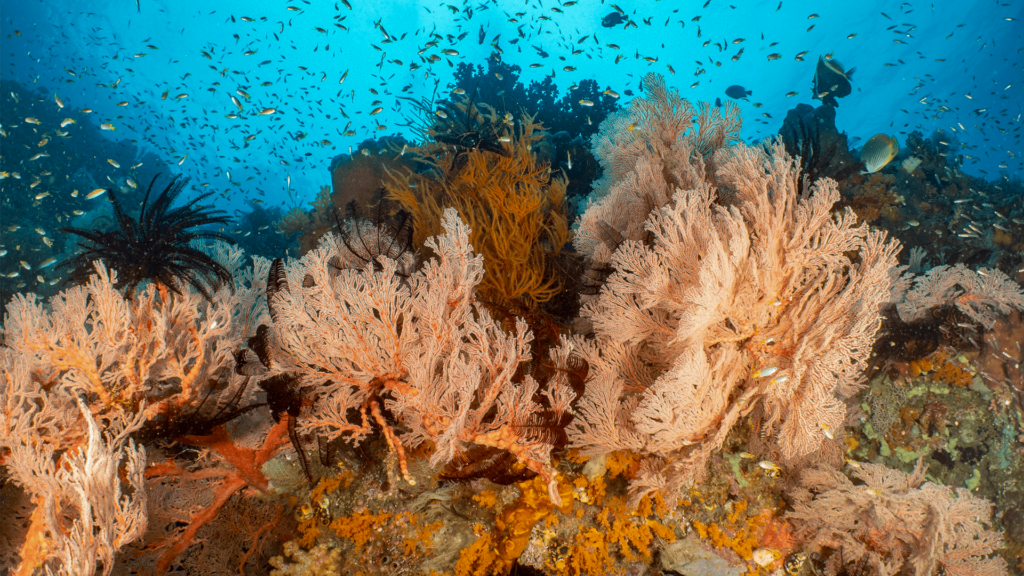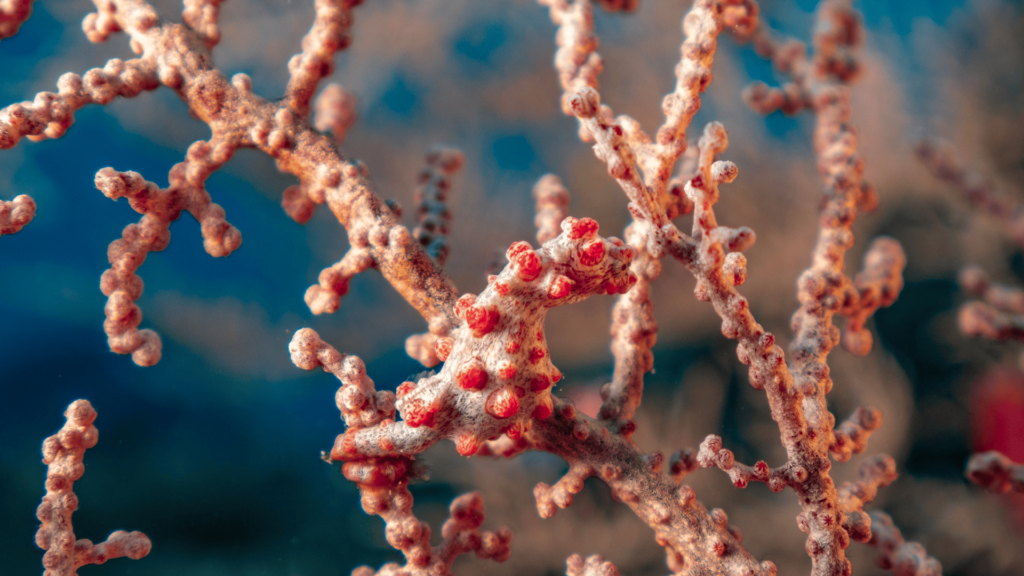The buzz began months before. Whispers of an underwater Eden, a place teeming with more life than any other ocean on Earth: Raja Ampat. The journey, I was told, was arduous. The cost, significant. “Is it really worth it?” friends would ask. My answer, after embarking on a 10-days liveaboard odyssey, is a resounding and unequivocal

The Long Road to Paradise
The prelude to Raja Ampat is always a pilgrimage. My journey began with a series of long-haul flights, the monotonous hum of jet engines blurring into a soundtrack of anticipation. Los Angeles to Seoul, Seoul to Jakarta, then a final, drowsy domestic hop to Sorong, West Papua. Stepping off that last plane, the air was thick, humid, and carried the distant scent of salt and earth – a stark contrast to the sterile airport cabins. Jet lag was a persistent companion, but the growing excitement acted as a potent antidote.
At the harbor, a small skiff awaited. The choppy ride through the murky port waters felt almost ceremonial, building the suspense. Then, she appeared: the Dune Aurora Liveaboard, a majestic Phinisi silhouetted against the setting sun. Her wooden hull, polished by countless journeys, seemed to breathe history. A flurry of smiles and welcoming hands pulled me aboard, and suddenly, after days of travel, I was there.
The initial hours were a whirlwind of introductions to my fellow passengers, a diverse mix of international divers and the incredibly attentive Indonesian crew. The safety briefing, the allocation of cabins, and the ritual of setting up my dive gear on the spacious deck felt both familiar and incredibly exciting. This would be my new home, my floating sanctuary, for the next ten days.
The “Check Dive” and the Reality Check
Waking up onboard for the first time was surreal. The gentle rocking of the boat, the distant cry of gulls, and the smell of freshly brewed coffee wafted through my cabin. After a light breakfast, the crews gathered us for our first briefing. Our “check-out” dive was planned for a nearby reef.
There’s always a little rustiness on that first dive after a long break. My buoyancy felt a bit off, and the initial visibility wasn’t quite the crystal-clear postcard image I’d envisioned. But even in this unassuming spot, the sheer density of life was staggering. Small schools of fusiliers darted past, colourful angelfish grazed on sponges, and the corals, though not the vibrant soft corals Misool is famous for, were healthy and diverse. It was a gentle reintroduction to the underwater world, a chance to shake off the travel dust and reacquaint myself with the rhythm of breathing underwater.
That evening, after the day’s two dives, dinner was a feast – fresh seafood, fragrant rice, and local vegetables. The conversations were hesitant at first, but a shared meal and the collective exhilaration of being in Raja Ampat quickly forged bonds. As the engine rumbled to life, signaling our overnight journey south to the Misool archipelago, I drifted off to sleep, a quiet hum of wonder replacing the jet lag.
Into the Heart of Misool – A Symphony of Soft Corals

The next four days unfurled in a blissful, addictive rhythm: eat, sleep, dive, repeat. Each morning, I’d wake to a new, breathtaking vista of towering karst islands draped in emerald jungle, piercing a turquoise sea. The pre-dawn light, the aroma of coffee, and the clatter of tanks being filled became my new normal.
Misool quickly revealed itself as a wonderland of soft corals. At sites like “Boo Windows,” we swam through a natural archway, sunlight filtering through the iconic “windows” in the rock, illuminating clouds of glassfish and creating a truly ethereal scene. The currents here could be playful, but our guides, with their encyclopedic knowledge of tides and dive sites, always ensured we were in the right place at the right time.
My personal favourite was an unnamed reef where the soft corals exploded in a riot of colour – vibrant pinks, electric purples, and fiery oranges – swaying gently with the surge. It was like swimming through an impressionist painting, with countless tiny anthias adding flickers of movement to the canvas. Finding pygmy seahorses here became a rewarding challenge, their minuscule forms perfectly camouflaged on gorgonian fans.
To break up the diving, we took a topside excursion, kayaking through a serene, hidden lagoon, its waters so clear we could see juvenile reef sharks patrolling below our paddles. Another afternoon brought a short, but sweaty, hike up a limestone pinnacle for a panoramic view of the iconic Misool landscape – a labyrinth of mushroom-shaped islands scattered across an impossibly blue sea. It was a stark reminder that Raja Ampat’s beauty wasn’t confined to its depths.
The Journey Central – Currents and Critters of Dampier Strait
As we sailed north, the underwater landscape gradually transformed. The delicate soft corals of Misool gave way to the nutrient-rich, current-swept waters of the Dampier Strait, promising different, yet equally spectacular, encounters. These dives were often “action dives,” thrilling drift dives that carried us past dizzying schools of fish.
“Cape Kri,” renowned for its world-record fish diversity, was an exhilarating experience. We hung in the current, watching a continuous parade of life: massive schools of jacks, barracuda, and snappers swirled in synchronized ballets. Reef sharks glided effortlessly through the blue, seemingly unfazed by our presence. It was raw, untamed nature, and the sheer volume of biomass was almost overwhelming.
Of course, a return to Raja Ampat wouldn’t be complete without another manta encounter. At “Blue Magic”, a submerged pinnacle reef (“seamount”) located between Kri Island and Waigeo.
One evening, we explored the fascinating world of “muck diving”, armed with powerful torches, we searched for the bizarre and the camouflaged. Here, amidst the sand and rubble, we found ornate ghost pipefish, colorful nudibranchs, and the elusive walking shark – an endemic marvel that uses its fins to “walk” along the seafloor. It was a stark contrast to the wide-angle glory of the reefs but equally captivating.
The Final Days: The Bitter-Sweet End
The last dive of the trip was a bittersweet affair. There was the satisfaction of a perfect dive, crystal-clear water, and a final farewell to a playful reef shark, but also a pang of sadness knowing it was the last. Back on board, the familiar routine of rinsing gear felt different, tinged with finality.
That evening, the crew prepared a special farewell dinner – an incredible spread of Indonesian delicacies, followed by a celebratory cake. Stories flowed freely, laughter echoed across the deck, and newfound friendships were cemented with promises to meet again. The crew, who had worked tirelessly to make our trip seamless, joined us for a sing-along, their genuine warmth a testament to the magic of these floating homes. As Dune Aurora Liveaboard silently made her way back towards Sorong, I spent hours on deck, gazing at the impossibly bright stars, reflecting on the journey.
Conclusion: Was it Worth It?
The long flights, the significant investment, the occasional current that tested my finning muscles – was it all worth it? Absolutely, unequivocally, yes.
Raja Ampat isn’t just a dive destination; it’s an immersion. It’s a place where the vibrant pulse of the ocean is undeniable, where every dive reveals something new, and where the natural beauty above the surface rivals the wonders below. It’s a reminder of the fragility and resilience of our planet’s coral reefs and the importance of places like this.
I left Raja Ampat not just with a logbook full of incredible dives, but with a heart full of gratitude, a mind buzzing with unforgettable images, and a profound sense of connection to a truly wild and magnificent corner of the world. If you ever get the chance, answer the call of Raja Ampat. You won’t regret it.



